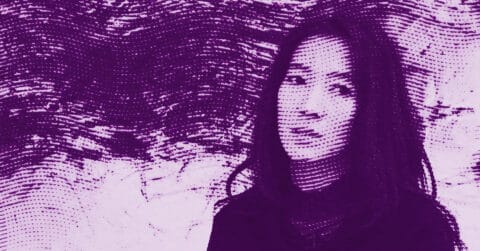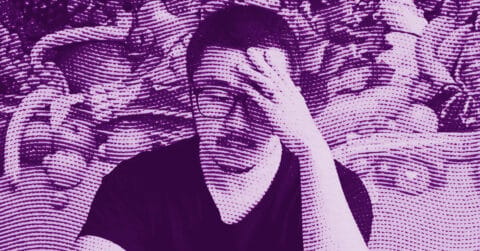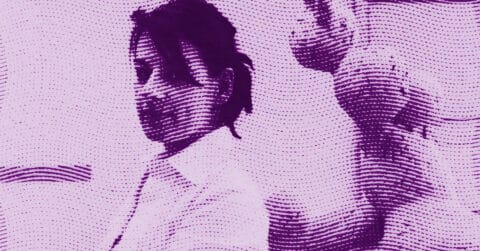Listen to me carefully, you bunch of snobs, there are artists who slap you with their images and others who slowly stab you with their lens. Fiona Pardington (born in 1961), this New Zealand photography magician, definitely belongs to the second category. Her work is a cannibal feast where beauty devours death and death engulfs beauty.
Here is an artist who transforms museums into luxurious morgues and still lifes into existential manifests. While some contemporary photographers exhaust themselves documenting reality like image accountants, Pardington dissects the real with the surgical precision of a forensic doctor possessed by the spirit of Caravaggio. She is the Medea of the darkroom, sacrificing her subjects on the altar of art to better resurrect them in a new aesthetic dimension.
Take her series of “heitiki,” those traditional Maori jade pendants. When the photographic establishment is content to catalogue these objects as ethnographic curiosities, Pardington transforms them into hallucinatory icons, floating in a photographic void that would make Mark Rothko envious. It is Bataille who spoke to us of the “accursed share,” this necessity of sacrifice and unproductive expenditure in every culture. Pardington viscerally understands this truth: her photographs are acts of sublime transgression, where each object becomes an offering to some deity of the image.
Her practice is haunted by what Roland Barthes called the “that-has-been” of photography, that unique ability of the medium to capture what is already dead. But where Barthes theorized, Pardington materializes. Her recent still lifes are not mere homages to 17th-century vanities; they are vanities for our era of mass extinction and ecological disaster. A dead albatross photographed by Pardington is not just a commentary on ocean pollution; it is a visual meditation on our own finitude that would make Heidegger weep.
When she photographs the head casts made in the 19th century by phrenologist Pierre-Marie Dumoutier, she does not simply document the remains of scientific colonialism. No, she performs an act of photographic necromancy, invoking the ghosts of her Ngāi Tahu ancestors to give them a spectral presence in our present. This is Walter Benjamin in action, the mechanical reproduction of art transformed into a resurrection ritual.
Her technique is an explosive mix of classical formal rigor and baroque excess. In her images, black is not the absence of light; it is a black hole threatening to engulf the viewer. Her prints are so precise that they become almost obscene, as if she wanted us to touch with our eyes the very texture of death. She pushes the camera to its limits, just as Bacon twisted his figures until they screamed.
What is fascinating is her ability to transform the most banal object into a sacred relic. A simple plastic bottle washed up on a beach becomes, under her lens, a contemporary memento mori. A glass skull photographed in her studio is no longer a simple kitsch trinket but a meditation on the artificiality of our modern funerary rituals. Even her withered flowers seem more alive than nature, as if decomposition itself were a higher form of vitality.
Pardington’s photography is an act of resistance against cultural amnesia. In a world where images are consumed and discarded at the speed of light, she creates photographs that demand slow, almost painful contemplation. Each image is a gaze trap, a machine to slow down time. She understands, like few artists today, that the true transgression lies no longer in shock but in duration.
She practices what I would call an “aesthetic of repair.” When she photographs taxidermied specimens in museum collections, she does not merely document their state of preservation. She restores to them a lost dignity, transforming their death into a form of aesthetic survival. It is Derrida in practice, a deconstruction that becomes reconstruction.
Her work on the “huia,” those extinct New Zealand birds, is particularly revealing. By photographing their feathers preserved in museums, she does not only commemorate an extinct species. She creates what Georges Didi-Huberman would call “surviving images,” visual ghosts that continue to haunt our present. It’s a form of poetic justice: the camera, this instrument of modernity that has documented so much destruction, becomes in her hands a tool of symbolic repair.
But make no mistake, there is nothing sentimental in her approach. Her compassion is fierce, her tenderness predatory. She photographs death as others photograph love, with a disturbing mix of intimacy and distance. That is what makes her work so unsettling: she forces us to look at what we usually prefer to ignore, but she does so with such formal mastery that we cannot look away.
In her more recent still life series, she pushes even further this dialectic between beauty and destruction. She arranges complex compositions mixing found objects, family relics, and consumer society waste. The result is a sort of contemporary “wunderkammer” where the sublime rubs shoulders with the trivial. It’s Susan Sontag in three dimensions: a reflection on our fetishistic relationship to objects, but also on our incapacity to truly face our own mortality.
I think especially of her images of beached Portuguese man o’ wars, photographed on plastic surfaces that imitate their translucent texture. It is Baudrillard taken to the extreme: the simulacrum becomes more real than the original, the copy truer than the model. But unlike so many contemporary artists who indulge in easy irony, Pardington fully embraces the paradox. She transforms this confusion between the natural and the artificial into a new form of visual truth.
Her use of lighting is particularly masterful. She does not merely illuminate her subjects; she sculpts the darkness around them. The black in her images is not a simple background, it is an active space that constantly threatens to engulf what she photographs. This is Tanizaki Jun’ichirō applied to contemporary photography: an exploration of how shadows can reveal more than light.
Pardington’s images function simultaneously as documents and as metaphors. When she photographs a head cast of the Marquis de Sade, she does not just document a historical artifact. She creates a visual meditation on power, desire, and transgression that would have delighted Michel Foucault. It is art history becoming visual philosophy.
If her early works were marked by a more directly political approach, particularly in her exploration of gender and identity issues, her recent work reaches an almost mystical dimension. She practices what I would call a “negative theology” of the image, where absence becomes presence and loss transforms into revelation. Each photograph is like a visual prayer addressed to an absent god.
Pardington creates photographs that demand and deserve our time. She understands that true radicalism today is not in easy provocation but in creating images that resist immediate consumption. Her work is a form of resistance against the general acceleration of our visual culture, an appeal for a slower, deeper way of seeing.
She is not simply a photographer; she is a philosopher of the image who uses the camera as Nietzsche used the hammer, to probe the hollow idols of our visual culture. Her work reminds us that photography can still be an act of thought, not just a technical exercise or a commercial gesture.
For those who still think photography is a minor art, Pardington’s work is a masterful slap in the face. She demonstrates that the camera can be as expressive as the brush, as precise as the scalpel, as profound as the pen. In her hands, photography becomes what it has always potentially been: a means to see what lies behind appearances, a tool to make the invisible visible.
And for those who complain that contemporary art has become too conceptual, too disconnected from beauty, Pardington proves that it is possible to be intellectually rigorous without sacrificing the emotional power of the image. Her work is living proof that beauty can be subversive and critical thinking can be sensual.
Fiona Pardington is not only a great New Zealand photographer, she is an artist who redefines what photography can be in the 21st century. Her work is a visual manifesto for an art that refuses the ease of spectacle while embracing the power of the image. She shows us that the true avant-garde might not be in perpetual rupture, but in a deeper form of attention to the world and its mysteries.
















